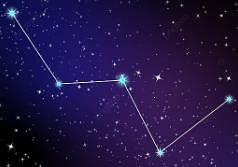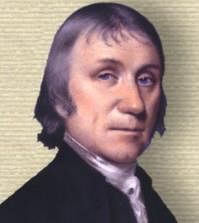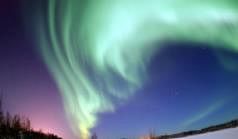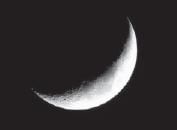All Exams >
Class 6 >
GK Olympiad for Class 6 >
All Questions
All questions of Our Earth and Universe for Class 6 Exam
The word planet came from _______ language.
- a)Sanskrit
- b)Roman
- c)Greek
- d)English
Correct answer is option 'C'. Can you explain this answer?
The word planet came from _______ language.
a)
Sanskrit
b)
Roman
c)
Greek
d)
English
|
|
Varun Kapoor answered |
Roman mythology is to thank for the monikers of most of the eight planets in the solar system. The Romans bestowed the names of gods and goddesses on the five planets that could be seen in the night sky with the naked eye.
Natural satellite of Earth’s orbit is
- a)Space belts
- b)Mars
- c)Sun
- d)Moon
Correct answer is option 'D'. Can you explain this answer?
Natural satellite of Earth’s orbit is
a)
Space belts
b)
Mars
c)
Sun
d)
Moon
|
|
Ipsit Raj answered |
Moon is natural satellite of earth , so.....
Choose the incorrect statement.- a)Leap year comes after every four years.
- b)Leap year consists of 366 days.
- c)In a leap year, February has 29 days.
- d)1997 was a leap year.
Correct answer is option 'D'. Can you explain this answer?
Choose the incorrect statement.
a)
Leap year comes after every four years.
b)
Leap year consists of 366 days.
c)
In a leap year, February has 29 days.
d)
1997 was a leap year.
|
|
Ashwini Goyal answered |
Explanation:
The incorrect statement is option 'D' which states that 1997 was a leap year. This is incorrect because leap years occur every four years, except for years that are divisible by 100 but not divisible by 400.
Leap Year
A leap year is a year that contains an extra day, February 29th, making it a total of 366 days instead of the usual 365 days. This additional day is added to keep our calendar in alignment with the Earth's revolutions around the sun, which takes about 365.24 days.
Leap Year Calculation
To determine if a year is a leap year, we follow these rules:
1. A year that is divisible by 4 is a leap year.
2. However, if the year is divisible by 100, it is not a leap year, unless it is also divisible by 400.
For example:
- 2000 was a leap year because it is divisible by both 4 and 400.
- 1900 was not a leap year because it is divisible by 4 and 100 but not by 400.
1997
1997 is not divisible by 4, so it does not meet the first condition for being a leap year. Therefore, it is not a leap year.
Conclusion
In summary, the incorrect statement is option 'D' because 1997 was not a leap year. Leap years occur every four years, except for years that are divisible by 100 but not divisible by 400.
The incorrect statement is option 'D' which states that 1997 was a leap year. This is incorrect because leap years occur every four years, except for years that are divisible by 100 but not divisible by 400.
Leap Year
A leap year is a year that contains an extra day, February 29th, making it a total of 366 days instead of the usual 365 days. This additional day is added to keep our calendar in alignment with the Earth's revolutions around the sun, which takes about 365.24 days.
Leap Year Calculation
To determine if a year is a leap year, we follow these rules:
1. A year that is divisible by 4 is a leap year.
2. However, if the year is divisible by 100, it is not a leap year, unless it is also divisible by 400.
For example:
- 2000 was a leap year because it is divisible by both 4 and 400.
- 1900 was not a leap year because it is divisible by 4 and 100 but not by 400.
1997
1997 is not divisible by 4, so it does not meet the first condition for being a leap year. Therefore, it is not a leap year.
Conclusion
In summary, the incorrect statement is option 'D' because 1997 was not a leap year. Leap years occur every four years, except for years that are divisible by 100 but not divisible by 400.
The large dark patches on the moon’s surface are known as ______ .- a)dark matter
Correct answer is option ''. Can you explain this answer?
The large dark patches on the moon’s surface are known as ______ .
a)
dark matter
|
|
Didrika Kotian answered |
The large dark spots are known as Maria - a Latin word meaning 'seas'. Maria means a huge basin containing lava.
Therefore, the dark patches on the moon are known as Maria or seas as it is filled with lava.
The correct answer is option 'D'.
Which statement is incorrect about solar system?- a)Sun is centre of the solar system.
- b)Jupiter is the biggest planet in size.
- c)Mercury is the smallest planet of the solar system.
- d)Earth has rings around it.
Correct answer is option 'D'. Can you explain this answer?
Which statement is incorrect about solar system?
a)
Sun is centre of the solar system.
b)
Jupiter is the biggest planet in size.
c)
Mercury is the smallest planet of the solar system.
d)
Earth has rings around it.
|
|
Anita Menon answered |
At the equator, the rings would appear to divide the sun, casting a dramatic shadow over half the world. Likewise, the rings themselves would cast shadows on Earth.
Planet ‘X’ is a cold and dry planet having two satellites - Phobos and Deimos. Its 95% atmosphere is made up of carbon dioxide.What is ‘X’ in the above paragraph?- a)Mercury
- b)Venus
- c)Mars
- d)Saturn
Correct answer is option 'C'. Can you explain this answer?
Planet ‘X’ is a cold and dry planet having two satellites - Phobos and Deimos. Its 95% atmosphere is made up of carbon dioxide.What is ‘X’ in the above paragraph?
a)
Mercury
b)
Venus
c)
Mars
d)
Saturn
|
|
Mehul Sharma answered |
Understanding Planet 'X'
Planet 'X' in the given paragraph is identified as Mars. Here’s a detailed explanation:
Satellites of Mars
- Mars has two small moons: Phobos and Deimos.
- These moons are irregularly shaped and much smaller than Earth's moon.
Atmospheric Composition
- Mars has a very thin atmosphere, about 95% composed of carbon dioxide.
- This composition leads to its cold and dry environment.
Comparison with Other Planets
- Mercury: Has no satellites and a very thin atmosphere, primarily composed of oxygen and sodium.
- Venus: Also lacks moons, and its atmosphere is mostly carbon dioxide, but it is much thicker, leading to a greenhouse effect and extreme heat.
- Saturn: Has a thick atmosphere and is known for its prominent ring system, but does not have the characteristics described.
Conclusion
- Based on the presence of Phobos and Deimos and the high concentration of carbon dioxide in the atmosphere, the planet 'X' is undoubtedly Mars.
- Therefore, the correct answer to the question is option 'C' - Mars.
Planet 'X' in the given paragraph is identified as Mars. Here’s a detailed explanation:
Satellites of Mars
- Mars has two small moons: Phobos and Deimos.
- These moons are irregularly shaped and much smaller than Earth's moon.
Atmospheric Composition
- Mars has a very thin atmosphere, about 95% composed of carbon dioxide.
- This composition leads to its cold and dry environment.
Comparison with Other Planets
- Mercury: Has no satellites and a very thin atmosphere, primarily composed of oxygen and sodium.
- Venus: Also lacks moons, and its atmosphere is mostly carbon dioxide, but it is much thicker, leading to a greenhouse effect and extreme heat.
- Saturn: Has a thick atmosphere and is known for its prominent ring system, but does not have the characteristics described.
Conclusion
- Based on the presence of Phobos and Deimos and the high concentration of carbon dioxide in the atmosphere, the planet 'X' is undoubtedly Mars.
- Therefore, the correct answer to the question is option 'C' - Mars.
Stars are enormous spheres of ignited gas that light the cosmos. They come in many different types and sizes. Which among the following is not a known type of star?- a)White dwarf
- b)Red giant
- c)Green dwarf
- d)Red dwarf
Correct answer is option 'C'. Can you explain this answer?
Stars are enormous spheres of ignited gas that light the cosmos. They come in many different types and sizes. Which among the following is not a known type of star?
a)
White dwarf
b)
Red giant
c)
Green dwarf
d)
Red dwarf
|
|
Kalyan Sengupta answered |
Types of Stars
Stars are classified into various types based on their characteristics, such as size, temperature, and brightness. Here are some commonly known star types:
Green Dwarfs: An Imaginary Type
The term "Green Dwarf" does not exist in the classification of stars.
Conclusion
In conclusion, among the options provided, "Green Dwarf" is not a known type of star. Instead, recognized classifications include White Dwarfs, Red Giants, and Red Dwarfs, each with distinct properties and characteristics.
Stars are classified into various types based on their characteristics, such as size, temperature, and brightness. Here are some commonly known star types:
- White Dwarfs: These are small, dense remnants of stars that have exhausted their nuclear fuel. They often shine faintly and are very hot initially but cool down over time.
- Red Giants: These stars are in a later stage of stellar evolution. They have expanded and cooled, giving them a reddish appearance. They are much larger than the Sun and can be thousands of times brighter.
- Red Dwarfs: These are small and relatively cool stars on the main sequence. They are the most common type of star in the universe, known for their longevity and dim light.
Green Dwarfs: An Imaginary Type
The term "Green Dwarf" does not exist in the classification of stars.
- Non-existent Classification: There is no recognized star type called "Green Dwarf." Stars do not emit light primarily in the green spectrum; instead, they emit a range of colors depending on their temperature.
- Color Perception: The perception of color in stars is often a result of the combination of various wavelengths of light emitted. For example, a star may appear red, blue, or white, but not green.
Conclusion
In conclusion, among the options provided, "Green Dwarf" is not a known type of star. Instead, recognized classifications include White Dwarfs, Red Giants, and Red Dwarfs, each with distinct properties and characteristics.
Which among the following is the nearest major galaxy to the Milky Way?- a)IC 1101
- b)Andromeda
- c)NGC 262
- d)None of these
Correct answer is option 'B'. Can you explain this answer?
Which among the following is the nearest major galaxy to the Milky Way?
a)
IC 1101
b)
Andromeda
c)
NGC 262
d)
None of these
|
|
Sarita Singh answered |
The Andromeda Galaxy, also known as Messier 31 or M31, is a spiral galaxy located about 2.5 million light-years from Earth. Located in the Andromeda constellation, it is the closest spiral galaxy to the Milky Way, where our solar system is. It is also the largest galaxy of what is called the Local Group which is a collection of more than 54 galaxies including the Milky Way.
Constellations are a group of stars that form a particular shape in the sky. Each of them has been given a specific name. Which organisation is responsible for naming constellations?- a)Federation of Astronomical Societies
- b)NASA
- c)The International Astronomical Union
- d)ISRO
Correct answer is option 'C'. Can you explain this answer?
Constellations are a group of stars that form a particular shape in the sky. Each of them has been given a specific name. Which organisation is responsible for naming constellations?
a)
Federation of Astronomical Societies
b)
NASA
c)
The International Astronomical Union
d)
ISRO
|
|
Sarita Singh answered |
The organisation is the International Astronomical Union.
Shape of ‘moon’ is- a)circle
- b)oval
- c)spherical
- d)conical
Correct answer is option 'C'. Can you explain this answer?
Shape of ‘moon’ is
a)
circle
b)
oval
c)
spherical
d)
conical
|
|
Ipsit Raj answered |
It has no flatness on it body
Imaginary line which runs through center of Earth is called- a)east pole
- b)south pole
- c)axis
- d)north pole
Correct answer is option 'C'. Can you explain this answer?
Imaginary line which runs through center of Earth is called
a)
east pole
b)
south pole
c)
axis
d)
north pole
|
|
Sarita Singh answered |
- The earth we live on is a sphere that rotates daily on its axis.
- The axis is an imaginary line that runs through the center of the earth from top to bottom.
- It passes through both the North and the South Poles.
- The Poles are imaginary points marking the "top" and "bottom" of our earth.
Celestial Bodies that have their own heat and which emit light in large amounts is called as _______.- a)android
- b)planets
- c)stars
- d)constellations
Correct answer is option 'C'. Can you explain this answer?
Celestial Bodies that have their own heat and which emit light in large amounts is called as _______.
a)
android
b)
planets
c)
stars
d)
constellations
|
|
Sarita Singh answered |
Celestial bodies that have their own heat and which emit light in large amount is called stars.
When sun is entirely or partially blocked by moon, it is termed as- a)solar eclipse
- b)lunar eclipse
- c)regular eclipse
- d)irregular eclipse
Correct answer is option 'A'. Can you explain this answer?
When sun is entirely or partially blocked by moon, it is termed as
a)
solar eclipse
b)
lunar eclipse
c)
regular eclipse
d)
irregular eclipse
|
|
Ishan Choudhury answered |
The Moon blocks the light of the Sun and a shadow of the Moon is cast on the Earth's surface. This is an eclipse of the Sun or a solar eclipse.
There are three types of solar eclipse: Total, partial, and annular. During a total eclipse, the Moon completely covers our view of the Sun.
There are three types of solar eclipse: Total, partial, and annular. During a total eclipse, the Moon completely covers our view of the Sun.
The sun, the moon and all those objects shining in the night sky are called _________.- a)shining Satellites
- b)celestial Bodies
- c)shining Earth
- d)astrological Satellites
Correct answer is option 'B'. Can you explain this answer?
The sun, the moon and all those objects shining in the night sky are called _________.
a)
shining Satellites
b)
celestial Bodies
c)
shining Earth
d)
astrological Satellites
|
|
Dishani Pillai answered |
Understanding Celestial Bodies
The term "celestial bodies" refers to all natural objects in space. This includes a variety of entities, which can be categorized into several types.
What are Celestial Bodies?
- Definition: Celestial bodies are any natural objects found in space. This encompasses both large and small entities that exist outside Earth's atmosphere.
- Examples: The sun, moon, stars, planets, asteroids, comets, and galaxies are all considered celestial bodies.
Why Option B is Correct?
- Inclusion of Various Objects: The option "celestial bodies" effectively captures all shining objects in the night sky, such as the sun, moon, and stars.
- Scientific Classification: In astronomy, celestial bodies are classified based on their properties, movements, and compositions, making this term comprehensive.
Other Options Explained
- Option A: Shining Satellites: This term is not accurate because it only refers to man-made objects orbiting Earth, like satellites, and does not encompass natural celestial bodies.
- Option C: Shining Earth: This option is misleading as it refers only to Earth, ignoring other celestial entities.
- Option D: Astrological Satellites: This term does not apply to the natural objects of the night sky but rather suggests a connection to astrology, which is unrelated to the scientific classification of celestial bodies.
Conclusion
In summary, the correct answer is option 'B', "celestial bodies," as it accurately describes the sun, moon, and all other natural objects shining in the night sky, providing a clear and inclusive term for these fascinating entities.
The term "celestial bodies" refers to all natural objects in space. This includes a variety of entities, which can be categorized into several types.
What are Celestial Bodies?
- Definition: Celestial bodies are any natural objects found in space. This encompasses both large and small entities that exist outside Earth's atmosphere.
- Examples: The sun, moon, stars, planets, asteroids, comets, and galaxies are all considered celestial bodies.
Why Option B is Correct?
- Inclusion of Various Objects: The option "celestial bodies" effectively captures all shining objects in the night sky, such as the sun, moon, and stars.
- Scientific Classification: In astronomy, celestial bodies are classified based on their properties, movements, and compositions, making this term comprehensive.
Other Options Explained
- Option A: Shining Satellites: This term is not accurate because it only refers to man-made objects orbiting Earth, like satellites, and does not encompass natural celestial bodies.
- Option C: Shining Earth: This option is misleading as it refers only to Earth, ignoring other celestial entities.
- Option D: Astrological Satellites: This term does not apply to the natural objects of the night sky but rather suggests a connection to astrology, which is unrelated to the scientific classification of celestial bodies.
Conclusion
In summary, the correct answer is option 'B', "celestial bodies," as it accurately describes the sun, moon, and all other natural objects shining in the night sky, providing a clear and inclusive term for these fascinating entities.
A weather map shows information about atmospheric pressure and weather fronts. Which type of Earth scientist works on developing and interpreting weather maps?- a)Geologist
- b)Astronomer
- c)Meteorologist
- d)Oceanographer
Correct answer is option 'D'. Can you explain this answer?
A weather map shows information about atmospheric pressure and weather fronts. Which type of Earth scientist works on developing and interpreting weather maps?
a)
Geologist
b)
Astronomer
c)
Meteorologist
d)
Oceanographer
|
|
Sarita Singh answered |
Oceanographer works on developing and interpreting weather maps.
Time which earth takes to complete its one revolution is- a)365 1/4 days
- b)365 days
- c)28 days
- d)29 days
Correct answer is option 'A'. Can you explain this answer?
Time which earth takes to complete its one revolution is
a)
365 1/4 days
b)
365 days
c)
28 days
d)
29 days
|
|
Sarita Singh answered |
The earth takes exactly 365 days and 6 hours to complete one revolution which is equal to approximately 365 days.
Planet’s atmosphere is made up of different gases. On which of the following planets methane gas is found in large amounts?- a)Jupiter
- b)Saturn
- c)Uranus
- d)Mercury
Correct answer is option 'C'. Can you explain this answer?
Planet’s atmosphere is made up of different gases. On which of the following planets methane gas is found in large amounts?
a)
Jupiter
b)
Saturn
c)
Uranus
d)
Mercury
|
|
Anita Menon answered |
Uranus is made of water, methane, and ammonia fluids above a small rocky center. Its atmosphere is made of hydrogen and helium like Jupiter and Saturn, but it also has methane. The methane makes Uranus blue.
Asteroids and Meteoroids consists of ____.- a)nine planets
- b)satellites
- c)the sun
- d)all of these
Correct answer is option 'D'. Can you explain this answer?
Asteroids and Meteoroids consists of ____.
a)
nine planets
b)
satellites
c)
the sun
d)
all of these
|
|
Sarita Singh answered |
Eros, an Asteroid. Meteoroids are lumps of rock or iron that orbit the sun, just as planets, asteroids, and comets do. Meteoroids, especially the tiny particles called micrometeoroids, are extremely common throughout the solar system.
Proxima Centauri, the closest star to Earth after Sun is a type of ________.- a)red dwarf star
- b)brown dwarf star
- c)yellow dwarf star
- d)blue giant star
Correct answer is option 'A'. Can you explain this answer?
Proxima Centauri, the closest star to Earth after Sun is a type of ________.
a)
red dwarf star
b)
brown dwarf star
c)
yellow dwarf star
d)
blue giant star
|
|
Sarita Singh answered |
Proxima Centauri, the closest star to Earth after sun is a type of Red dwarf stars.
When lava cools quickly on the Earth’s surface, it forms ‘X’. ‘X’ is a very light rock used as a body scrubber and to polish floors.Identify ‘X’ in the above given lines?- a)Gneiss
- b)Shale
- c)Basalt
- d)Pumice
Correct answer is option 'D'. Can you explain this answer?
When lava cools quickly on the Earth’s surface, it forms ‘X’. ‘X’ is a very light rock used as a body scrubber and to polish floors.Identify ‘X’ in the above given lines?
a)
Gneiss
b)
Shale
c)
Basalt
d)
Pumice
|
|
Varun Kapoor answered |
Pumice is a type of volcanic rock, produced when lava with a very high content of water and gases is discharged from volcano. Pumice is a very light rock which is used as body scrubber and to polish floor.
Identify the Cassiopeia constellation in the given picture.- a)

- b)

- c)

- d)

Correct answer is option 'A'. Can you explain this answer?
Identify the Cassiopeia constellation in the given picture.
a)

b)

c)

d)

|
|
Anita Menon answered |
The constellation Cassiopeia, Queen of Ethiopia, can be seen in the northern hemisphere all year long. Cassiopeia is one of the most easily recognizable constellations due to its distinctive W or M shape, depending on the time of year and the viewer’s location.
Outermost layer of Earth is- a)asthenosphere
- b)crust
- c)trench
- d)ridge
Correct answer is option 'B'. Can you explain this answer?
Outermost layer of Earth is
a)
asthenosphere
b)
crust
c)
trench
d)
ridge
|
|
Varun Kapoor answered |
The crust is the outermost layer of the Earth’s surface, where we live. The thickness ranges from 0 to 60 kilometres.
It’s a solid rock layer that comes in two varieties:
It’s a solid rock layer that comes in two varieties:
- Continental crust covers the land
- Oceanic crust covers water
How many constellations are there in the sky?- a)40
- b)88
- c)45
- d)80
Correct answer is option 'B'. Can you explain this answer?
How many constellations are there in the sky?
a)
40
b)
88
c)
45
d)
80
|
|
Sarita Singh answered |
There are 88 constellations in the sky.
Match the following.

- a)A-(ii); B-(iv); C-(iii); D-(i)
- b)A-(i); B-(iv); C-(ii); D-(iii)
- c)A-(ii); B-(iv); C-(i); D-(iii)
- d)A-(iii); B-(i); C-(ii); D-(iv)
Correct answer is option 'A'. Can you explain this answer?
Match the following.


a)
A-(ii); B-(iv); C-(iii); D-(i)
b)
A-(i); B-(iv); C-(ii); D-(iii)
c)
A-(ii); B-(iv); C-(i); D-(iii)
d)
A-(iii); B-(i); C-(ii); D-(iv)
|
|
Sarita Singh answered |
A. Largest Planet: Jupiter is the fifth planet from the Sun and the largest in the Solar System.
B. Brightest Planet: Venus, the second planet from the sun, is the hottest and brightest planet in the solar system.
C. Densest Planet: Earth is the densest planet in the Solar System.
D. Smallest Planet: Mercury is the smallest planet in the Solar System and the closest to the Sun.
B. Brightest Planet: Venus, the second planet from the sun, is the hottest and brightest planet in the solar system.
C. Densest Planet: Earth is the densest planet in the Solar System.
D. Smallest Planet: Mercury is the smallest planet in the Solar System and the closest to the Sun.
In 1774, a British clergyman named Joseph Priestley conducted an experiment in which he focussed sunrays on a tube containing mercuric oxide. This produced a gas which he noticed made candles burn brighter, thus discovering a gas which is the very essence of life. What gas was it?

- a)Carbon dioxide
- b)Nitrogen
- c)Oxygen
- d)Helium
Correct answer is option 'C'. Can you explain this answer?
In 1774, a British clergyman named Joseph Priestley conducted an experiment in which he focussed sunrays on a tube containing mercuric oxide. This produced a gas which he noticed made candles burn brighter, thus discovering a gas which is the very essence of life. What gas was it?


a)
Carbon dioxide
b)
Nitrogen
c)
Oxygen
d)
Helium
|
|
Sarita Singh answered |
The gas is oxygen.
Earth spins on its own- a)orbit
- b)horizon
- c)axis
- d)path
Correct answer is option 'C'. Can you explain this answer?
Earth spins on its own
a)
orbit
b)
horizon
c)
axis
d)
path
|
|
Sarita Singh answered |
Earth spins on its own axis.
Lunar eclipse can be seen when there is- a)half moon
- b)full moon
- c)crescent
- d)new moon
Correct answer is option 'B'. Can you explain this answer?
Lunar eclipse can be seen when there is
a)
half moon
b)
full moon
c)
crescent
d)
new moon
|
|
Sarita Singh answered |
Lunar eclipse can be seen when there is full moon.
Rotation of Earth gives the- a)winter season
- b)autumn season
- c)day and night
- d)summer season
Correct answer is option 'C'. Can you explain this answer?
Rotation of Earth gives the
a)
winter season
b)
autumn season
c)
day and night
d)
summer season
|
|
Sarita Singh answered |
Rotation of Earth gives the day and night.
Phases of appearance of moon are caused by movement of moon around the- a)sun
- b)earth
- c)planets
- d)stars
Correct answer is option 'B'. Can you explain this answer?
Phases of appearance of moon are caused by movement of moon around the
a)
sun
b)
earth
c)
planets
d)
stars
|
|
Varun Kapoor answered |
For practical understanding, you can perform the experiment given below:
- Take a torch, switch it on and place it on a table.
- Stand in front of the source of light of the torch.
- Take a small ball and hold it at a height same as that of the torch and facing the torch.
- You will notice that the ball appears dark.
- Now if you change the position of the ball, keeping the height same, you will notice that only some part of the ball appears illuminated.
- If you place it diametrically opposite to the torch, but at height slightly higher than your head, the entire ball gets illuminated.
- You can also notice that when the ball appears completely dark, the ball is closest to the torch.
- The phases of the moon are due to situations similar to this experiment.
- In this experiment, you represent the earth, the torch represents the sun and the ball the moon.
- You can see that the changes in appearance of the ball are caused by movement of the ball around you.
Which of the following statements is incorrect about Milky Way?- a)90% of its mass consist of dark matter which is not visible to us.
- b)Milky way is made up of dust and gas.
- c)The centre of our galaxy is called Sagittarius.
- d)None of these.
Correct answer is option 'D'. Can you explain this answer?
Which of the following statements is incorrect about Milky Way?
a)
90% of its mass consist of dark matter which is not visible to us.
b)
Milky way is made up of dust and gas.
c)
The centre of our galaxy is called Sagittarius.
d)
None of these.
|
|
Ishan Choudhury answered |
- About 90 percent of the mass in the Milky Way’s gravitational field is made up of dark matter, so the luminous stars gas and dust of the galaxy are embedded at the center of a huge, roughly spherical dark matter halo of more than a million light-years across. There is an object at the center of the Milky Way called Sagittarius A-star which emits much more X-rays and radio waves than expected for a star-sized body.
- Much of the Milky Way galaxy is blocked from our view on Earth due to the barriers created by dusty gas clouds blocking much of the light. Using infrared, microwave, and radio astronomy techniques, it is possible to penetrate much of this dusty fog. However, that too allows us only detect only half of the stars and gas.
Orbit period of smallest planet ‘Mercury’ is- a)70 Earth Days
- b)90 Earth Days
- c)60 Earth Days
- d)87.97 Earth Days
Correct answer is option 'D'. Can you explain this answer?
Orbit period of smallest planet ‘Mercury’ is
a)
70 Earth Days
b)
90 Earth Days
c)
60 Earth Days
d)
87.97 Earth Days
|
|
Sarita Singh answered |
Mercury is the smallest planet in the Solar System and the closest to the Sun. Its orbit around the Sun takes 87.97 Earth days, the shortest of all the Sun's planets.
It is the largest explosion of stars that takes place in space.- a)Black hole
- b)None of these
- c)Star explosion
- d)Supernova
Correct answer is option 'D'. Can you explain this answer?
It is the largest explosion of stars that takes place in space.
a)
Black hole
b)
None of these
c)
Star explosion
d)
Supernova
|
|
Varun Kapoor answered |
- A supernova is an explosion of a massive supergiant star. It may shine with a brightness of 10 billion suns. It can briefly outshine entire galaxies and radiate more energy than our sun will in its entire lifetime. They're also the primary source of heavy elements like iron in the universe.
- According to NASA, supernovae are "the largest explosion that takes place in space.
Inner core of Earth is made up of- a)copper
- b)iron
- c)nickel-iron alloy
- d)platinum
Correct answer is option 'B'. Can you explain this answer?
Inner core of Earth is made up of
a)
copper
b)
iron
c)
nickel-iron alloy
d)
platinum
|
|
Sarita Singh answered |
Inner core of Earth is made up of iron.
What percent of the Earth’s water is found in the atmosphere?- a)0.001
- b)0.003
- c) 0.02
- d)0.2
Correct answer is option 'A'. Can you explain this answer?
What percent of the Earth’s water is found in the atmosphere?
a)
0.001
b)
0.003
c)
0.02
d)
0.2
|
|
Anita Menon answered |
The ocean holds about 97 percent of the Earth's water; the remaining three percent is distributed in many different places, including glaciers and ice, below the ground, in rivers and lakes, and in the atmosphere. At any given time only about 0.001 percent of Earth's water is in the form of atmospheric vapour, a surprisingly small number given its crucial role in weather.
The sun emits tiny electrical particles in all directions during solar flares. When they fall at the Earth’s north and south poles, they look like glowing ribbons of light which may be green, red or blue in colour. What are these called?

- a)Aurora Borealis
- b)Spectrum
- c)Aurora Australis
- d)Both (a) and (c)
Correct answer is option 'D'. Can you explain this answer?
The sun emits tiny electrical particles in all directions during solar flares. When they fall at the Earth’s north and south poles, they look like glowing ribbons of light which may be green, red or blue in colour. What are these called?


a)
Aurora Borealis
b)
Spectrum
c)
Aurora Australis
d)
Both (a) and (c)
|
|
Varun Kapoor answered |
- An aurora is a natural light display in the sky, particularly in the high-latitude of arctic and antarctic regions.
- It is caused by the collision of atmospheric atoms with energetic, charged particles coming from space.
- In northern latitudes, the effect is known as the Aurora Borealis or Northern lights; whereas in the southern latitudes it is known as Aurora Australis or Southern lights.
Each planet in the solar system has seasons. On which of the following planets, the length of each season is of about 3 years?- a)Venus
- b)Saturn
- c)Neptune
- d)Jupiter
Correct answer is option 'D'. Can you explain this answer?
Each planet in the solar system has seasons. On which of the following planets, the length of each season is of about 3 years?
a)
Venus
b)
Saturn
c)
Neptune
d)
Jupiter
|
|
Anita Menon answered |
Jupiter, like Venus, has an axial tilt of only 3 degrees, so there is literally no difference between the seasons. However, because of its distance from the sun, seasons change more slowly. The length of each season is roughly three years.
Two halves in which Earth is divided are called- a)ridges
- b)trenches
- c)equators
- d)hemispheres
Correct answer is option 'D'. Can you explain this answer?
Two halves in which Earth is divided are called
a)
ridges
b)
trenches
c)
equators
d)
hemispheres
|
|
Sarita Singh answered |
Two halves in which Earth is divided are called hemispheres.
Which is smallest planet of ‘Solar System’?- a)Earth
- b)Mercury
- c)Venus
- d)Mars
Correct answer is option 'B'. Can you explain this answer?
Which is smallest planet of ‘Solar System’?
a)
Earth
b)
Mercury
c)
Venus
d)
Mars
|
|
Sarita Singh answered |
Mercury is smallest planet of ‘Solar System’.
Time can be measured us ing many units depending on the duration of a phenomenon. Hours, minutes and seconds are common units of time. Which of the following is also a unit of time?- a)Cusec
- b)Light year
- c)Warp speed
- d)Fornight
Correct answer is option 'D'. Can you explain this answer?
Time can be measured us ing many units depending on the duration of a phenomenon. Hours, minutes and seconds are common units of time. Which of the following is also a unit of time?
a)
Cusec
b)
Light year
c)
Warp speed
d)
Fornight
|
|
Anita Menon answered |
The word Fortnight was derived from Fourteen nights and it denotes the time period of 2 weeks which includes fourteen days and nights.
When does Lunar Eclipse happen?
- a)During Half Moon
- b)During Full Moon
- c)During Equinox
- d)None of the above
Correct answer is option 'B'. Can you explain this answer?
When does Lunar Eclipse happen?
a)
During Half Moon
b)
During Full Moon
c)
During Equinox
d)
None of the above
|
|
Sarita Singh answered |
Eclipses of the Moon happen at full Moon, when the Sun, Earth and Moon are aligned to form an exact or an almost straight line.
Which is the farthest planet to the sun ?- a)Neptune
- b)Mercury
- c)Earth
- d)Uranus
Correct answer is option 'C'. Can you explain this answer?
Which is the farthest planet to the sun ?
a)
Neptune
b)
Mercury
c)
Earth
d)
Uranus
|
|
Sarita Singh answered |
The farthest planet to Sun among these is Neptune.
Summer Solstice is on- a)21st September
- b)23rd March
- c)21st December
- d)21st June
Correct answer is option 'D'. Can you explain this answer?
Summer Solstice is on
a)
21st September
b)
23rd March
c)
21st December
d)
21st June
|
|
Ishan Choudhury answered |
During the Northern Hemisphere's summer solstice which always falls around June 21, the Southern Hemisphere gets its winter solstice. Likewise, during the Northern Hemisphere's winter solstice which always falls around December 22, the Southern Hemisphere gets its summer solstice.
Shobit observes the moon which looks like as shown in the picture. How long will it be before Shobit sees the moon in the same phase again?

- a)1 week
- b)1 month
- c)1 year
- d)15 days
Correct answer is option 'B'. Can you explain this answer?
Shobit observes the moon which looks like as shown in the picture. How long will it be before Shobit sees the moon in the same phase again?


a)
1 week
b)
1 month
c)
1 year
d)
15 days
|
|
Sarita Singh answered |
Moon completes one revolution in 29.53 days. Thus each phase of the moon repeats after 29.53 days which is approximately equal to an average standard month.
Which of the following is the largest natural satellite in our solar system?- a)Triton
- b)Callisto
- c)Ganymede
- d)Titania
Correct answer is option 'C'. Can you explain this answer?
Which of the following is the largest natural satellite in our solar system?
a)
Triton
b)
Callisto
c)
Ganymede
d)
Titania
|
|
Sarita Singh answered |
Largest natural satellite in our solar system is Ganymede.
Chapter doubts & questions for Our Earth and Universe - GK Olympiad for Class 6 2025 is part of Class 6 exam preparation. The chapters have been prepared according to the Class 6 exam syllabus. The Chapter doubts & questions, notes, tests & MCQs are made for Class 6 2025 Exam. Find important definitions, questions, notes, meanings, examples, exercises, MCQs and online tests here.
Chapter doubts & questions of Our Earth and Universe - GK Olympiad for Class 6 in English & Hindi are available as part of Class 6 exam.
Download more important topics, notes, lectures and mock test series for Class 6 Exam by signing up for free.
GK Olympiad for Class 6
39 videos|80 docs|102 tests
|

Contact Support
Our team is online on weekdays between 10 AM - 7 PM
Typical reply within 3 hours
|
Free Exam Preparation
at your Fingertips!
Access Free Study Material - Test Series, Structured Courses, Free Videos & Study Notes and Prepare for Your Exam With Ease

 Join the 10M+ students on EduRev
Join the 10M+ students on EduRev
|

|
Create your account for free
OR
Forgot Password
OR
Signup to see your scores
go up within 7 days!
Access 1000+ FREE Docs, Videos and Tests
Takes less than 10 seconds to signup









